Tuesday’s temperatures were in the 90’s with high humidity so perhaps choosing the Shaw Nature Reserve for my late afternoon walk wasn’t the best of ideas. It did have the advantage, though, of being relatively deserted. Of course it was: sane people don’t walk in swamps during a heat wave.
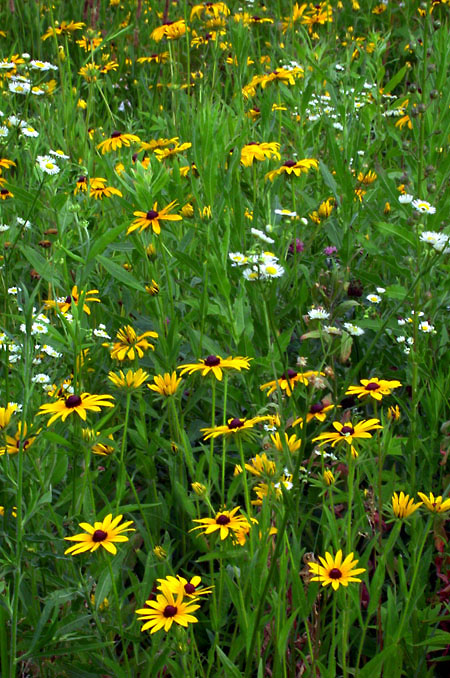
I hadn’t been out to Shaw since all the rains and was amazed at how lush and green everything was. The field grasses were up to my chest, and the flowers were so thick that in some places, the aroma made my head buzz.
Wait a sec…that’s not what caused the buzzing. Bugs. Lots of bugs out Tuesay. I was met as soon as I left the car and escorted about by varieties of wasp, fly, mosquito, or other flying creatures tempted by my lucious self. The black flies wanted to feed on me, and the sand wasps on the flies and I was, in effect, a self-contained mobile ecosystem.
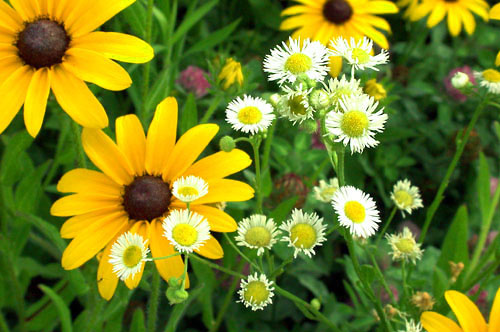
The insect life was manageable until I decided to walk through the forest; as soon as I started walking next to the stream, I attracted more and more insects until I was walking in the middle of a swarm of buzzing, biting, stinging creatures. This combined with the humidity and relentless green felt like a wall pushing against me, subtle clues that I wasn’t welcome in the forest today. Thank you, come again another day.
I continued on, stubbornly at this point because I wanted photos of the approaching storm from the prarie on the other side of the woods. However, when I walked into what seemed like a swarm of black flies, combined with a spider web across the path, it became too much. I turned around and started back. They followed and I gave an odd sort of scream and just started running– swatting about me as much as I could to keep the creatures off. I was glad no one else was around because I must have looked like a lunatic.
The moment I left the forest and entered the wild garden area, most of the creatures aburptly left me. I knew the reason for the sudden cessation of pursuit was that the insects preferred to stay near the water and out from the open–there were a lot of birds about, too. Still, I felt pushed out of the woods by hands made of flying insects, which is a bit creepy if you think on it.
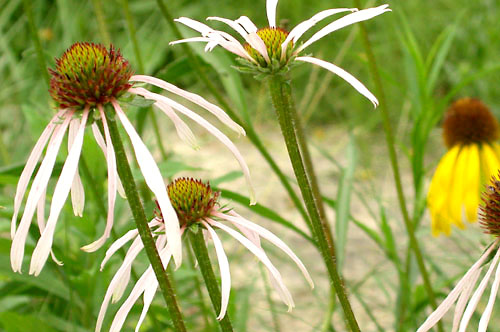
It’s hard to imagine that at one time much of the area where I walked was clear cut. Back in the 1800’s much of the forested area in the Ozarks was clear cut for homes and manufacturing. Thanks to rich soil and plentiful water and sunshine, the forests are again thick with growth and lumber companies are now looking at southern forests for clear cutting, pointing to previously clear-cut lands to show that the land recovers. From the Chrisian Science Monitor story:
Looking down a clear-cut Ozark ridge, a forester argued vigorously that clear-cutting is the best way to maintain long-term forest health. “Sure it’s unsightly. It’s like a new baby being born. It’s beautiful over time, but it’s ugly to start with.”
This talk of ‘clear cutting’ being good for the environment reminds me of the recent controversy about the salmon runs in the Northwest. The current administration wants to count hatchery based salmon with the wild to determine whether a species should be listed as endangered or not — a move that not one scientist would back or validate, no matter how many were asked to comment.
We’re being told that most species would still be listed as endangered even with this new count, and that this approach is a viable method for stream management. But what we’re finding is that rather than help species recover, the hatchery fish are leading to a decline–the genetically inferior bred fish compete with the more robust wild salmon for the same resources. But that’s science. We don’t need science anymore; all we need is a great deal of assurance when we speak.
You know how it is: we don’t want to stop runoff into streams from construction or restrict agricultural pollution around streams and rivers forever–easier to just capture a bunch of fish and breed ’em.
Just like we can re-plant forests here in Missouri. Only problem is, long-term research has shown that there has been a decline of genetic diversity with the trees in our forests. Just like poodles and politicians, trees can become too inbred and the species weaken. The forests look thick and rich, and the bugs are certainly happy with their home — but whatever the true nature of the Ozarks was before we came along is gone forever. The best we can hope for now is not to continue our ‘short cuts to conservation’.
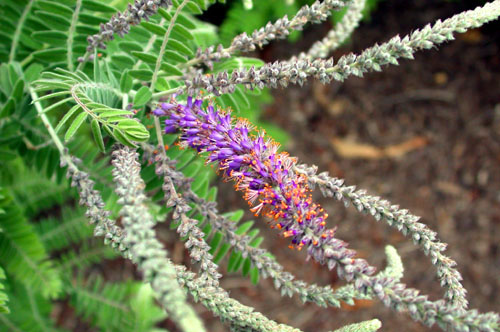
You should lie down now and remember the forest,
for it is disappearing–
no, the truth is it is gone now
and so what details you can bring back
might have a kind of life.Not the one you had hoped for, but a life
–you should lie down now and remember the forest–
nonetheless, you might call it “in the forest,”
no the truth is, it is gone now,
starting somewhere near the beginning, that edge,Or instead the first layer, the place you remember
(not the one you had hoped for, but a life)
as if it were firm, underfoot, for that place is a sea,
nonetheless, you might call it “in the forest,”
which we can never drift above, we were there or we were not,No surface, skimming. And blank in life, too,
or instead the first layer, the place you remember,
as layers fold in time, black humus there,
as if it were firm, underfoot, for that place is a sea,
like a light left hand descending, always on the same keys.The flecked birds of the forest sing behind and before
no surface, skimming. And blank in life, too,
sing without a music where there cannot be an order,
as layers fold in time, black humus there,
where wide swatches of light slice between gray trunks,Where the air has a texture of drying moss,
the flecked birds of the forest sing behind and before:
a musk from the mushrooms and scalloped molds.
They sing without a music where there cannot be an order,
though high in the dry leaves something does fall,Nothing comes down to us here.
Where the air has a texture of drying moss,
(in that place where I was raised) the forest was tangled,
a musk from the mushrooms and scalloped molds,
tangled with brambles, soft-starred and moving, fernsAnd the marred twines of cinquefoil, false strawberry, sumac–
nothing comes down to us here,
stained. A low branch swinging above a brook
in that place where I was raised, the forest was tangled,
and a cave just the width of shoulder blades.You can understand what I am doing when I think of the entry–
and the marred twines of cinquefoil, false strawberry, sumac–
as a kind of limit. Sometimes I imagine us walking there
(. . .pokeberry, stained. A low branch swinging above a brook)
in a place that is something like a forest.But perhaps the other kind, where the ground is covered
(you can understand what I am doing when I think of the entry)
by pliant green needles, there below the piney fronds,
a kind of limit. Sometimes I imagine us walking there.
And quickening below lie the sharp brown blades,The disfiguring blackness, then the bulbed phosphorescence of the roots.
But perhaps the other kind, where the ground is covered,
so strangely alike and yet singular, too, below
the pliant green needles, the piney fronds.
Once we were lost in the forest, so strangely alike and yet singular, too,
but the truth is, it is, lost to us now.The Forest by Susan Stewart
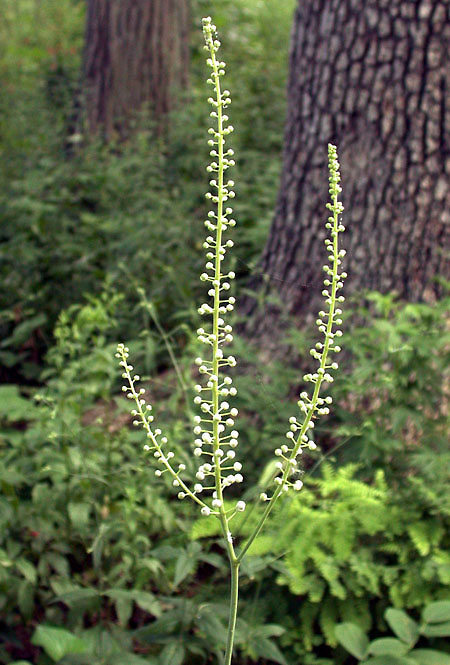
Speaking of leaving nature alone, Jak’s View from Vancouver writes about the re-introduction of wolves back into Yellowstone. In a decade this native species has already made a major impact in recovering the natural balance in the park and surrounding area.
Beyond being a vital species to the ecosystem, it’s wonderful to think of wolves roaming freely in the park again. They bring the heart back into the lands.
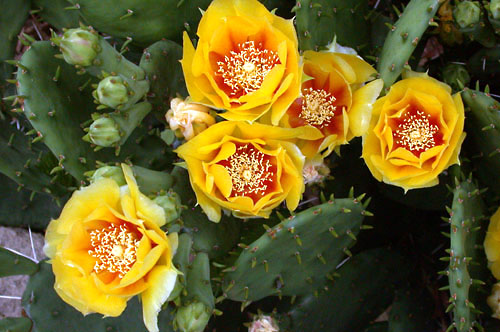
I never did get to my prairie to take photos of the approaching storm, but I did manage to get some from the wildflower area; including the cactus plants, which just absolutely thrive here — bees like them.
But my digital camera, tired out from being rained on and dropped from the seat of my car when I hit the brakes, slammed against a wall during a wind, or yanked out into humid green days like Tuesday is becoming querulous when I ask it to focus; taking photos is more like coaxing an ancient relative out of a comfortable seat by the fire, than point, frame, and shoot.
We’re both getting older, which means it needs to stay home more, and I need to stay home less.
